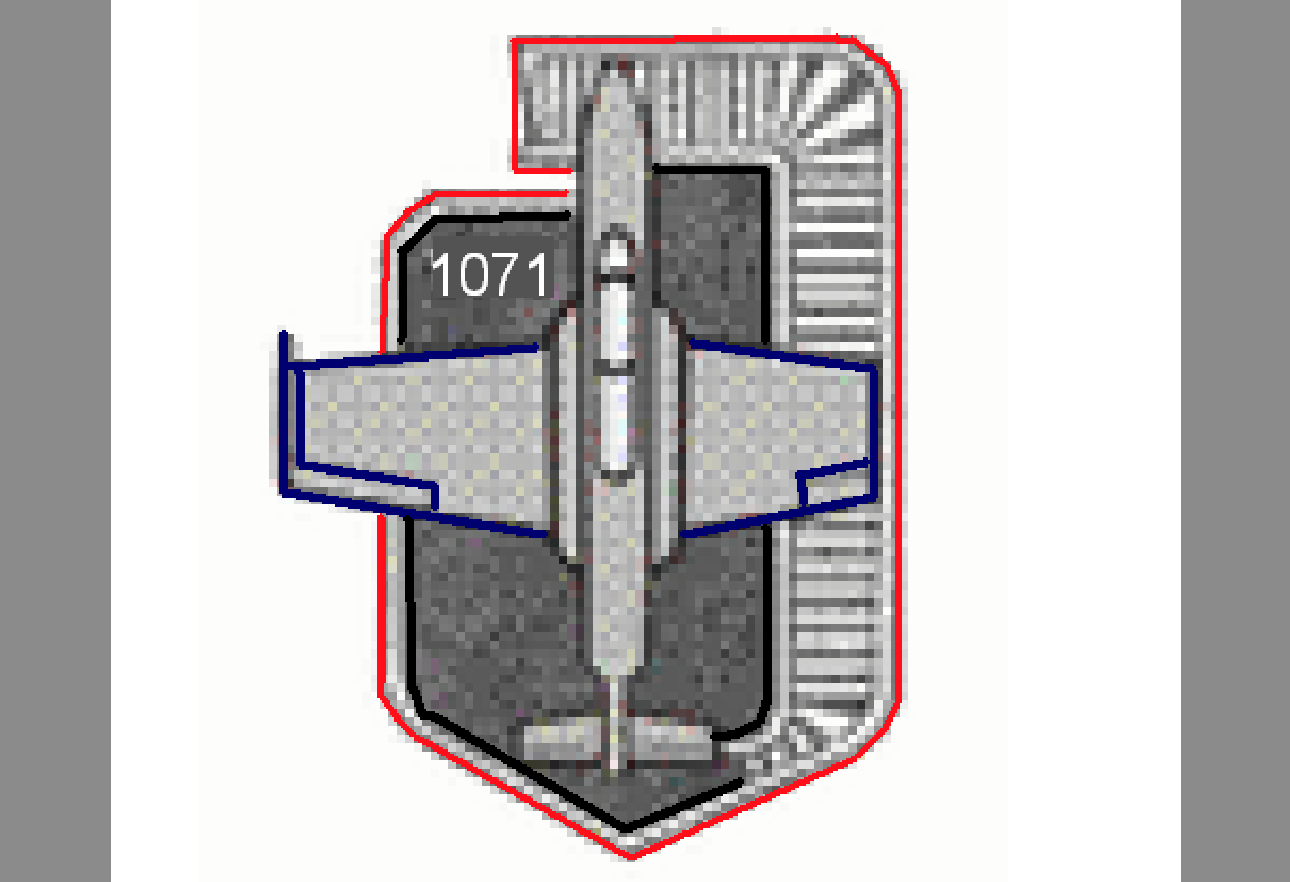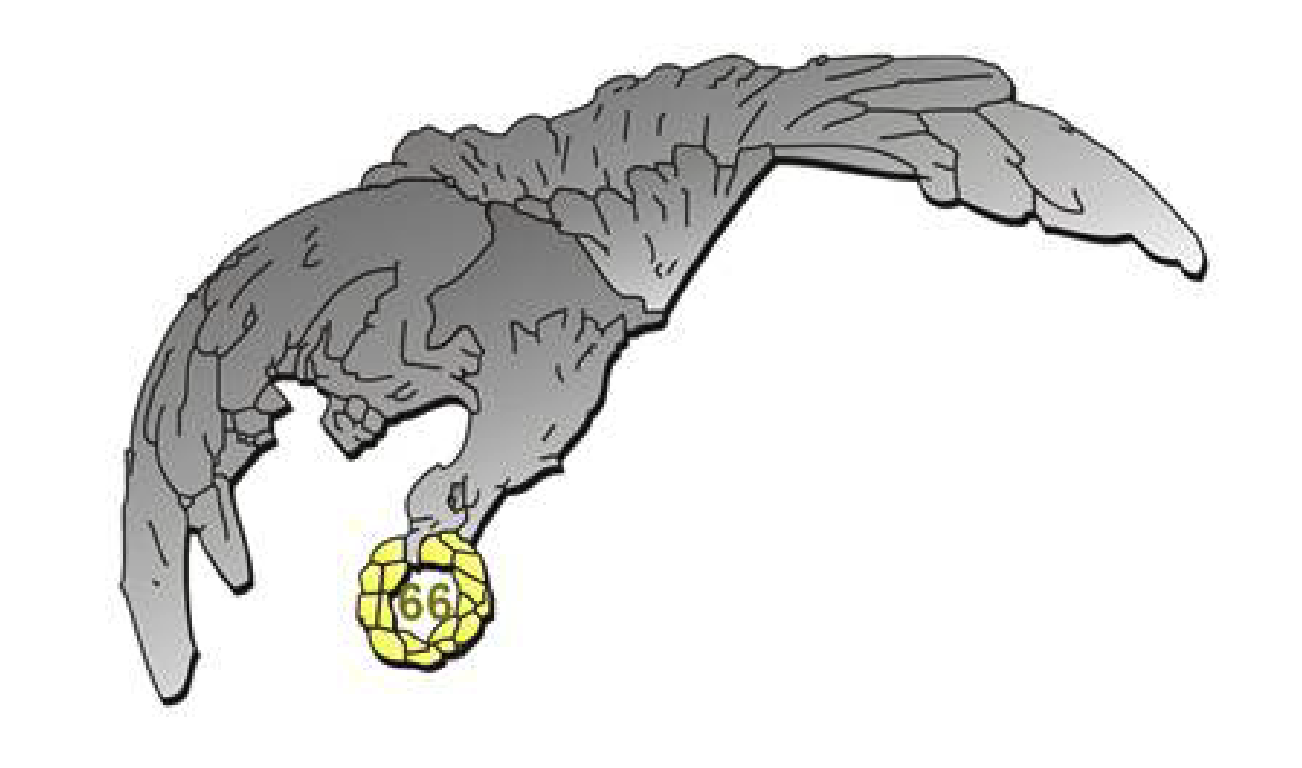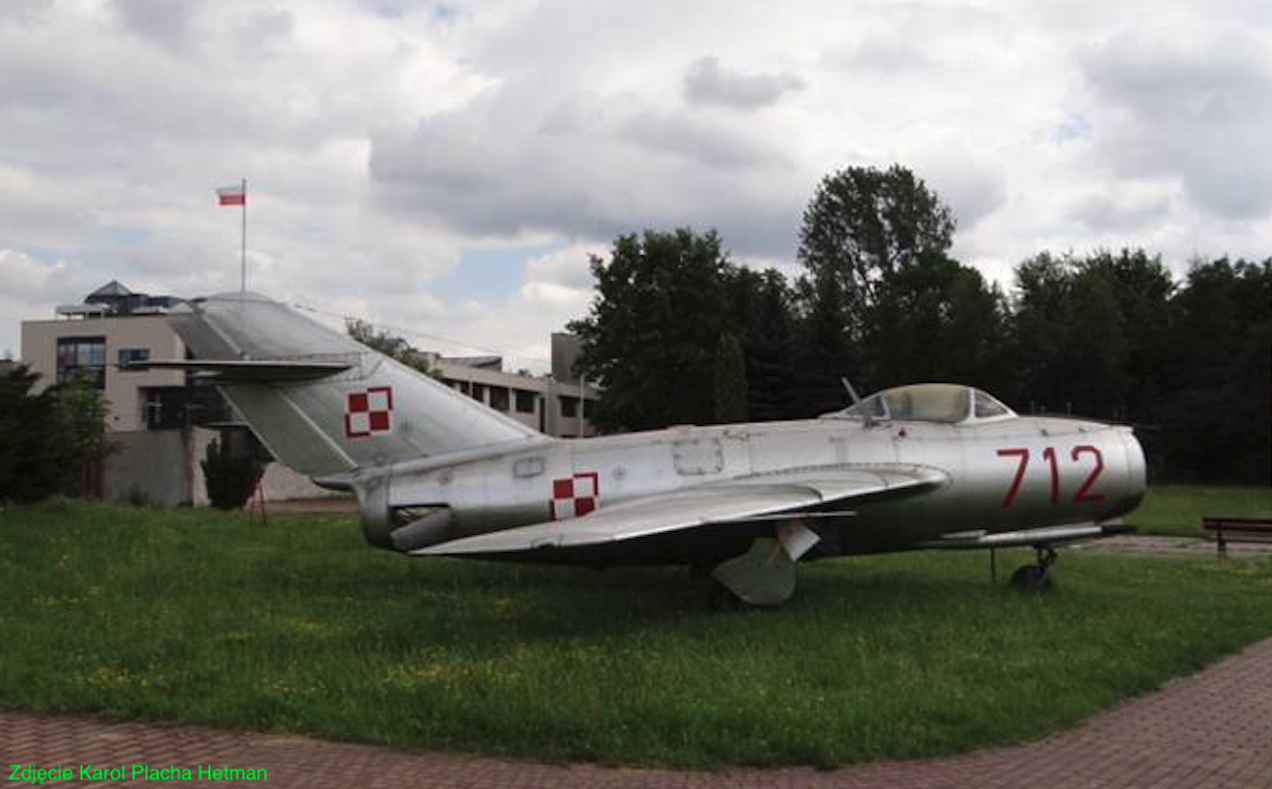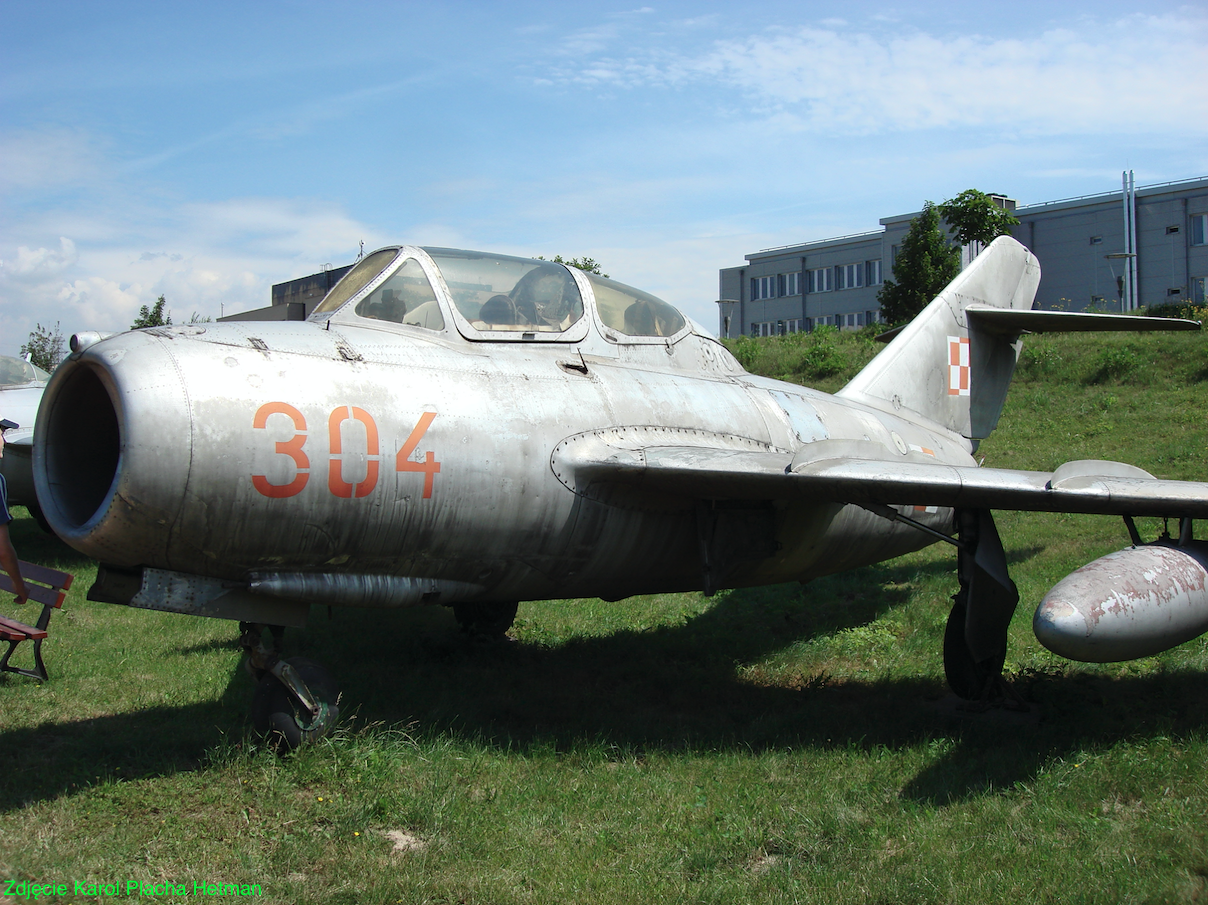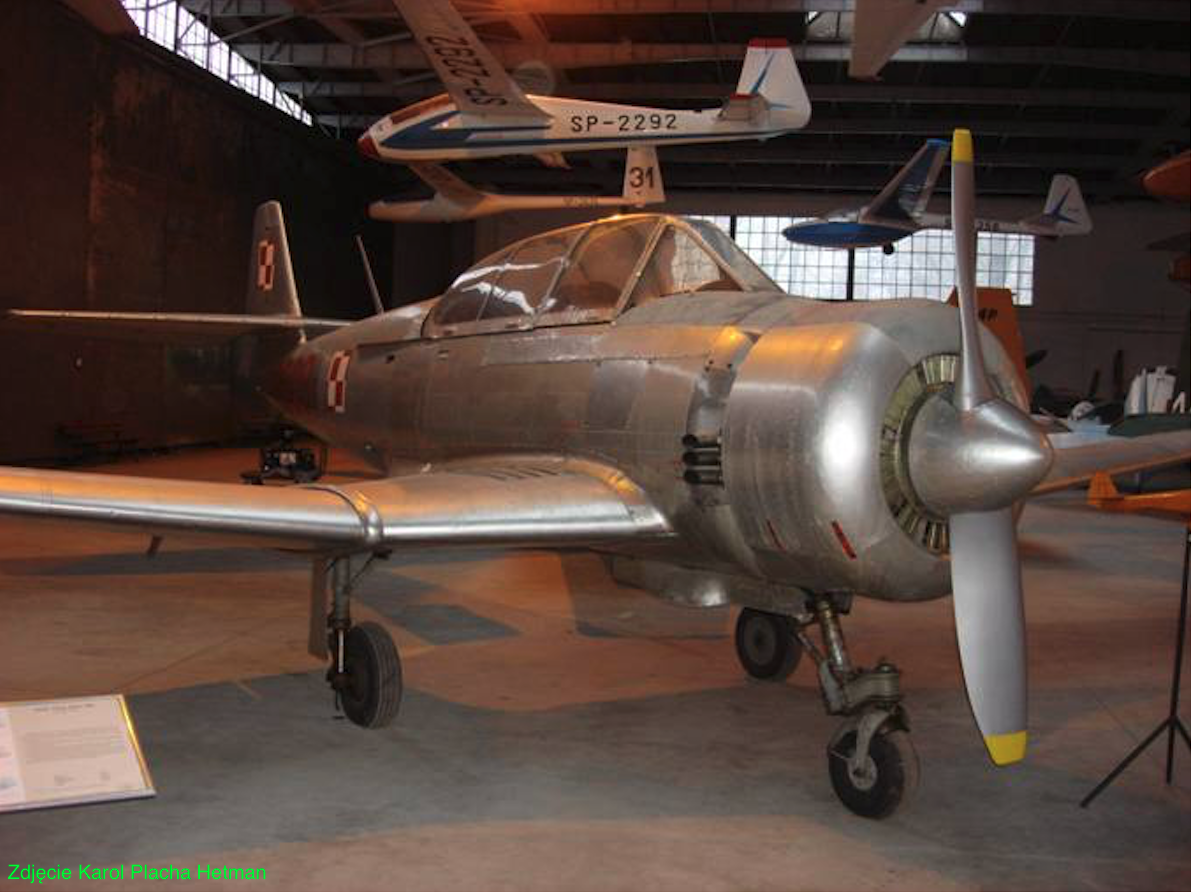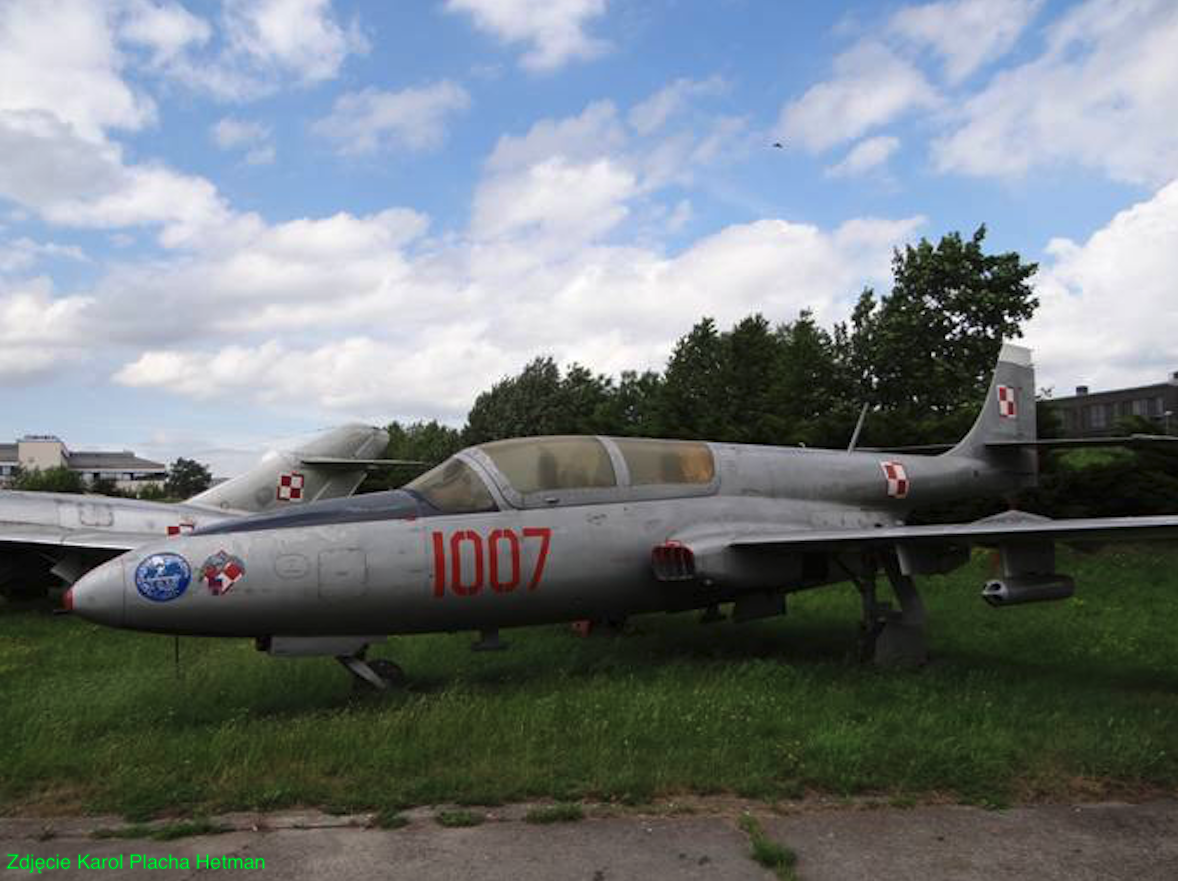Tomaszów Mazowiecki 2012-10-31
66 Lotniczy Pułk Szkolny – Lotnisko Nowy Glinnik.
Historia 66. LPSz.
Zanim opowiemy historię 66. LPSz, musimy cofnąć się do 1957 roku, kiedy to na nowoczesnym Lotnisku Nowy Glinnikzostał powołany do istnienia 63. Lotniczy Pułk Szkolno-Bojowy. Został on sformowany na bazie 3. Eskadry Pilotażu Bojowego w Tomaszowie Mazowieckim i 6. Eskadry Pilotażu Przejściowego także w Tomaszowie Mazowieckim. Eskadry te podlegały pod Szkołę Lotniczą w Radomiu. Dowódcą nowego Pułku został major pilot Kazimierz Ciepiela.
Pułk jeszcze na dobre nie rozpoczął działalności, a już został rozformowany. Co było powodem?
Otóż! Z końcem 1957 roku, nastąpił czwarty i ostatni przypadek ucieczki Polskiego pilota wojskowego na Zachód przy użyciu samolotu bojowego odmiany MiG-15. Pierwszym był ppor. pilot Franciszek Jarecki ( 1953 rok, 28. PLM Słupsk MiG-15 bis nr 3046 / 346 ), drugim był por. pilot Zdzisław Jaźwiński ( 1953 rok, 41. PLM Malbork MiG-15 bis ), trzecim był por. pilot Zygmunt Gościniak ( 1956 rok, 26. PLM Zegrze Pomorskie Lim-2 nr 1B 013-027 / 1327 ), ostatnim był por. pilot BogdanKożuchowski ( 7.11.1957 rok, 31. PLM Łask Lim-2 nb 1B 019-019 / 1919 ).
Nie miejsce tutaj na szczegóły ucieczek i ich konsekwencji. Niemniej jednak zdecydowanie musimy podkreślić, iż najbardziej ucierpieli koledzy i rodziny pozostałe w kraju. Ponieważ komuniści byli bezsilni wobec uciekinierów, ( których zaocznie skazywali na karę śmierci ), dlatego wyżywali się na przełożonych, podwładnych, kolegach i rodzinach. Efekty decyzji podjętych w ministerstwie obrony narodowej były dalekosiężne. Bywało, iż dotykały ludzi nie związanych w ogóle z całą sprawą. Ostatnia ucieczka z 31. PLM Łask spowodowała zmianę zadań postawionych przed jednostką. 31. Pułk Lotnictwa Myśliwskiego został przeformowany w 31. Pułk Lotnictwa Szkolno-Bojowego. Dlatego w dniu 22.05.1958 roku, ukazał się Rozkaz DWL i OPL OK. Nr 07/org na podstawie, którego rozformowano 63. Lotniczy Pułk Szkolno-Bojowy w Tomaszowie Mazowieckim. Bez wątpienia 63. Lotniczy Pułk Szkolno-Bojowy był najkrócej działającą jednostką w historii Polskie Lotnictwa.
Jednak marnotrawstwem należałoby nazwać pozostawienie nowoczesne lotniska wojskowego bez jednostki lotniczej. Stałym gospodarzem Lotniska Nowy Glinnik był Batalion Zaopatrzenia ( JW. 3247 ). Dlatego nakazano II Eskadrę z 61. Lotniczego Pułk Szkolno-Bojowy w Nowym Mieście nad Pilicą przebazować na Lotnisko Nowy Glinnik. W efekcie poprawie uległy warunki socjalno-bytowe w Nowym Mieście. Nie bez znaczenia była niewielka odległość między obu lotniskami. W linii prostej zaledwie 33 km, a samochodem 37 km.
W tamtym okresie egzystowanie jednej jednostki na dwóch lotniskach stałego bazowania był czymś niecodziennym. Dlatego w 1960 roku, zapadły odpowiednie decyzje. Na podstawie Rozkazu DWL i OPK nr 07/org z dnia 22.06.1960 roku, powołano do istnienia 66. Lotniczy Pułk Szkolno-Bojowy wchodzący w system szkolnictwa wojskowego w składzie Oficerskiej Szkoły Lotniczej im. Żwirki i Wigury w Radomiu. Szczegóły wykonawcze, odnośnie obsady etatowej i struktury jednostki, zostały zawarte w Rozkazie organizacyjnym komendanta OSL nr 071 z dnia 13.07.1960 roku, który nakazywał wyznaczonemu na dowódcę, majorowi pilotowi Kazimierzowi Ciepieli, sformować 66. LPSz, wg etatu 22/454, jako JW. 1071. Fundamentem był Batalion Zaopatrzenia i II Eskadra z 61 LPSz-B. Na miejsce stałego bazowania wyznaczono Lotnisko Nowy Glinnik. W ten sposób major pilot Kazimierz Ciepiela powtórnie przystąpił do organizowania lotniczego pułku szkolnego.
Podstawowym sprzętem lotniczym były samoloty MiG-15, Lim-1 i pochodne od nich wersje dwumiejscowe oraz szkolno-treningowy TS-8 Bies.
Z początkiem 60-lat nastąpiło ukierunkowanie zadań Pułku na typowe opanowanie sztuki pilotażu przez podchorążych. Szkolenie bojowe prowadzono w niewielkim zakresie. Dlatego nazwa Pułku została zmieniona na 66. Lotniczy Pułk Szkolny, bez słowa bojowy.
W dniu 27.08.1961 roku, 66. LPSz otrzymał sztandar którego fundatorem była załoga Tomaszowskich Zakładów Włókien Sztucznych „Wistom”. W imieniu Ministra Obrony Narodowej sztandar wręczył generał brygady Zdzisław Bobecki. Była to ważna uroczystość, gdyż potwierdzała ona integracje Jednostki Wojskowej z tutejszym społeczeństwem.
W dniu 19.06.1963 roku, Pułk przeżył pierwszą tragedię lotniczą. Śmiercią lotnika zginął starszy szeregowy podchorąży pilot Tomasz Roter.
W 1964 roku, Lotnicza Szkoła w Radomiu przestała istnieć. Dlatego zmieniona została podległość 66. LPSz pod Oficerską Szkołę Lotniczą im Janka Krasickiego w Dęblinie.
Dla pułku ważny był 1965 rok. Na wyposażenie zaczęto wprowadzać nowoczesny, z napędem turboodrzutowym, samolot szkolno-treningowy TS-11 Iskra. W tym celu do Dęblina udała się grupa pilotów-instruktorów. Szkolenie teoretyczne rozpoczęli oni w dniu 1.10.1965 roku. Samą naukę pilotażu rozpoczęli na Lotnisku Radom w grudniu 1965 roku. Piloci szybko opanowali nowy samolot i jako instruktorzy powrócili na Lotnisko Nowy Glinnik. Już wkrótce (styczeń 1966 rok) na stan jednostki przyjęto pierwsze samoloty PZL TS-11 Iskra. Aby szkolenie odbywało się płynnie 12 pilotów-instruktorów oddelegowano z Lotniska Radom na Lotnisko Nowy Glinnik. W maju 1966 roku, jedna eskadra osiągnęła gotowość do przeszkalania podchorążych na tym typie samolotu.
Wprowadzenie samolotów TS-11 Iskra do normalnej eksploatacji trwało trzy lata. Było to spowodowane chorobami dziecięcymi samolotów TS-11 Iskra oraz rozwiązaniem problemów zaopatrzeniowo-magazynowych. Dzisiaj nazwalibyśmy to logistyką. Młodsi czytelnicy muszą jeszcze wiedzieć o permanentnym kryzysie komunistycznych Rządów PRL Władysława Gomułki, 60-tych lat XX wieku, co także odczuwało się w wojsku.
Jeszcze do 1971 roku, podchorążowie przechodzili szkolenie na samolotach TS-8 Bies, a dopiero potem szkolenie na samolotach TS-11 Iskra. Od 1971 roku, samoloty TS-8 Bies wycofano z procesu szkolenia. Było to związane z nowymi metodami nauki pilotażu, aby lotnik nie nabierał szkodliwych nawyków dla pilotowania szybkich maszyn. Od 1972 roku, Pułk szkolił wyłącznie na samolotach z napędem turboodrzutowym.
70-lata XX wieku, to okres spokojnego szkolenia, przerwanego jednak trzema katastrofami i śmiercią czterech lotników. W dniu 26.05.1972 roku, zginął starszy kapral podchorąży pilot Jan Wilk. W dniu 29.09.1973 roku, zginął sierżant podchorąży pilot Tadeusz Kielecki. W dniu 27.05.1978 roku, zginęli: plutonowy podchorąży pilot Kazimierz Milaniuk oraz porucznik pilot inżynier Stanisław Kaczor. Cześć Ich Pamięci! Na szczęście były to jedyne tragedie lotnicze, które dotknęły 66. LPSz.
Koniec 80-lat to okres dużych zmian w Polskim Lotnictwie Wojskowym. Wielcy tego świata zawierali układy o ograniczeniu zbrojeń. Zaczynano stosować politykę otwartego nieba, celem ułatwienia kontaktów komercyjnych między państwami. Zadania dla wojskowego szkolenia lotniczego zostały zmniejszone. Dla 66. LPSz oznaczało to jego rozformowanie. Ówczesnym dowódcą Wojsk Lotniczych i Obrony Powietrznej był gen. broni pil. Jerzy Gotowała, a komendantem Wyższej Oficerskiej Szkoły Lotniczej Dęblin był gen. bryg. pil. Mirosław Hermaszewski. Samoloty TS-11 Iskra zostały przebazowane na Lotnisko Radom i Lotnisko Dęblin.
Jesienią 1989 roku, ukazał się rozkaz rozformowujący 66. LPSz z dniem 31.12.1989 roku.
Poczet dowódców 66. LPSz:
Płk pil. mgr Kazimierz Ciepiela ( 22.06.1960 – 29.01.1979 ). Płk dypl. pil. Ireneusz Witecki ( 29.01.1979 – 21.10.1981 ). Płk dypl. pil. Aleksander Wiesztort ( 21.10.1981 – 22.08.1987 ). Ppłk dypl. pil. mgr Janusz Karpowicz ( 22.08.1987 – 31.12.1989 ).
Opracowała Karol Placha Hetman

